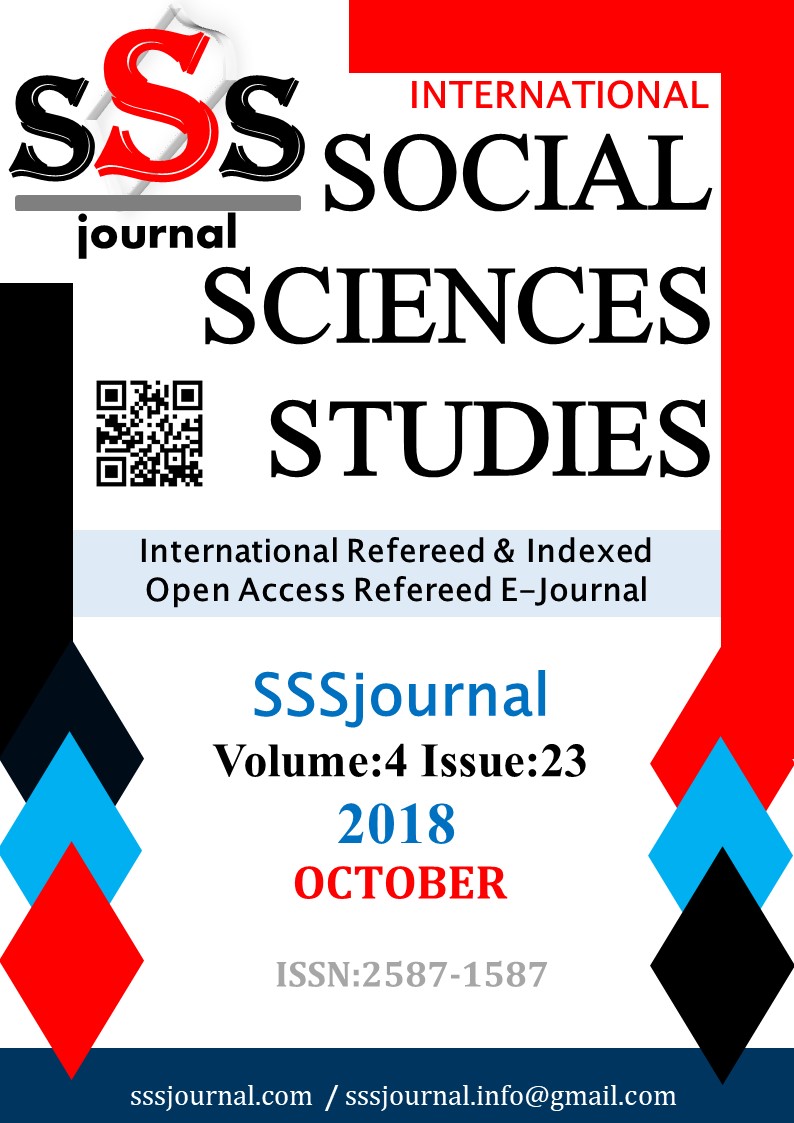Author :
Abstract
Bu çalışmanın amacı, müziğin duygularımız üzerindeki etkisinin ve insanların müziğin içindeki duygusal içeriği nasıl algıladığının incelenmesidir. Literatürdeki çalışmalarda, insanların müziğin içerdiği duyguyu nasıl algıladığına dair ileri sürülen teoriler incelenmiş ve bu teorilerin bir derlemesi sunulmuştur. Ayrıca, bu teoriler ışığında müzikteki duyguyu algılamada kadın ve erkekler arası farklar ile beyin görüntüleme yöntemleri ile bu süreçte beyinde gözlenen aktivasyonlar da genel olarak incelenmiştir.
Keywords
Abstract
The aim of this study is to investigate the effect of music on our emotions and how people perceive the emotional content of music. Theories in the literature studies are reviewed about how people perceive emotional content of music and collected works of this theories are represented. Additionally, in the light of this theories, differences between men and women about perception of emotion in the music and activations of brain in this continuum with brain monitoring methods are investigated generally.
Keywords
- Balkwill, L., L., Thompson, W., F., Matsunaga, R. (2004). Recognition of emotion in Japanese, Western and
- Balkwill, L., L., Thompson, W., F., Matsunaga, R. (2004). Recognition of emotion in Japanese, Western and Hindustani music by Japanese listeners. Japanese Psychological Research, 4, 337-349.
- Baum, D. (2006). EmoMusic-Classifying music according to emotion. 7. Veri Analizi Çalışma Grupları Tutanağı, Kosice, Slovakia, 1-3 Temmuz 2006.
- Baumgartner, T., Esslen, M., Jancke, L. (2006). From emotion perception to emotion experience: Emotions evoked by pictures and classical music. International Journal of Psychophysiology, 60, 34-43.
- Baumgartner, T., Lutz, K., Schmidt, C., F., Jancke, L. (2006). The emotional power of music: How music enhances the feeling of affective pictures. Brain Research, 1075, 151-164.
- Gendolla, G., H., E., Krüsken, J. (2001). Mood state and cardiovascular response in active coping with an affect-regulative challenge. International Journal of Psychophysiology, 41, 169-180.
- Gibson, J., J. (1966). In the senses considered as perceptual systems. Boston: Houghton Mifflin.
- Gomez, P., Danuser, B. (2004). Affective and physiological responses to environmental noises and music. International Journal of Psychophysiology, 53, 91-103.
- Guzzeta, C., E. (1989). Effects of relaxation and music therapy on patients in a coronary care unit with presumptive acute myocardial infarction. Heart Lung, 18, 609-16.
- Janata, P., Tomic, S., T., Rakowski, S., K. (2007). Characterisation of music-evoked autobiographical memories. Memory, 15, 845-860.
- Jeannerod, M. (1994). The representing brain: Neural correlates of motor intention and imagery. Behavioral and Brain Sciences, 17, 187-245.
- Juslin, P., N., Laukka, P. (2004). Expression, perception, and induction of musical emotions: A reviewed and a questionnaire study of everyday listening. Journal of New Music Research, 33, 217-238.
- Kivy, P. (2006). Mood and music: Some reflections for Noel Carroll. The Journal of Aesthetics and Art Criticism, 64, 271-281.
- Krumhansl, C., L. (2002). Music: A link between cognition and emotion. Current Directions In Psychological Science, 11, 45-50.
- Meyer, L., B. (1956). Emotion and meaning in music. Chicago: The University of Chicago Press.
- Nater, U., M., Abbruzzese, E., Krebs, M., Ehlert, U. (2006). Sex differences in emotional andpsychophysiological responses to musical stimuli. International Journal of Psychophysiology, 62, 300- 308.
- Oliveira, A., L., G., Oliveira, L., F. (2002) Toward an ecological conception of timbre. [Conference Paper] (Unpublished).
- Peretz, I. (2006). The nature of music from a biological perspective. Cognition, 100, 1-32.
- Peretz, I., Gagnon, L., Bouchard, B. (1998). Music and emotion: perceptual determinants, immediacy, and isolation after brain damage. Cognition, 68, 111-141.
- Prensner, J., D., Yowler, C., J., Smith, L., F., Steele, A., L., Fratianne, R., B. (2001). Music therapy forassistance with pain and anxiety management in burn treatment. The journal of burn care & rehabilitation, 22, 83-8.
- Preston, S., D., de Waal, F., B., M. (2002). Empathy: Its ultimate and proximate bases. Behavioral & Brain Sciences, 25, 1-72.
- Rizzolatti, G., Craighero, L., (2004). The mirror-neuron system. Annual Review of Neuroscience, 27, 169- 192.
- Sullivan, S., E., Gentile, D., A., Pick, A., D. (1998). The perception of emotion in music by eight-month-old infants. Infant Behavior & Development, 21, 705.
- Vickhoff, B., Malmgren, H. (2004). Why does music move us?. Philosophical Communications, Web Series, 34, 1-27.
